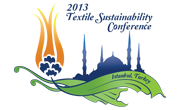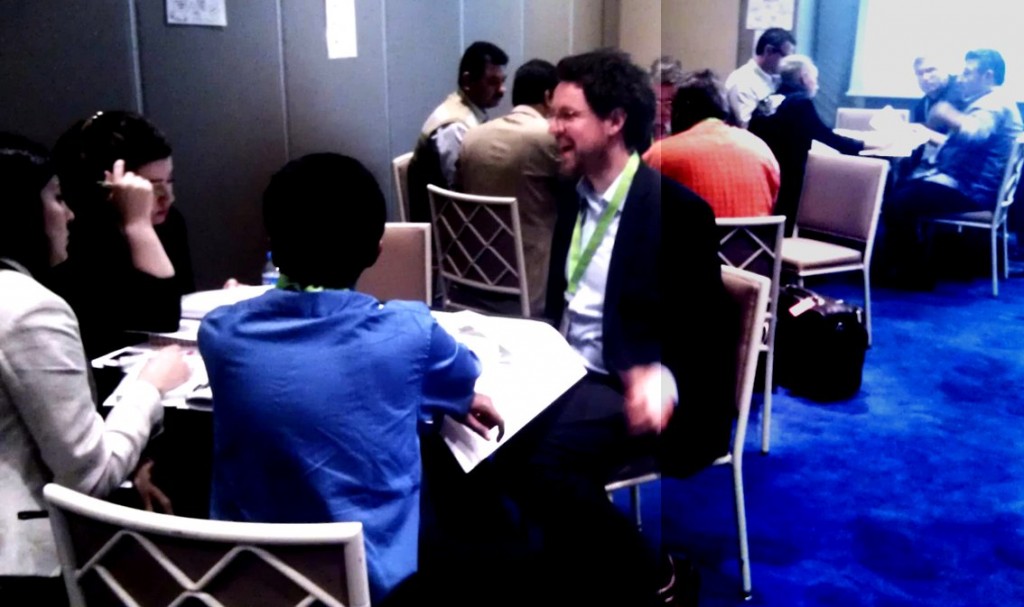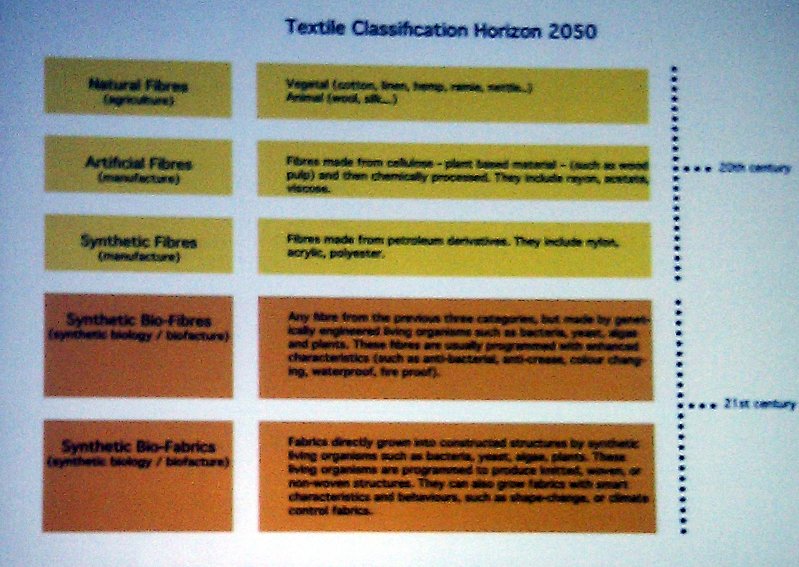 On November 12 and 13, 2013 the yearly Textile Exchange conference took place in Istanbul, Turkey.
On November 12 and 13, 2013 the yearly Textile Exchange conference took place in Istanbul, Turkey.
I was invited to run a workshop on Scenario Work as one of the ‘Strategy’ break out session on the first day. The workshop was fully booked with 25 highly interested and active participants. In 90 challenging minutes they experienced a compressed version of a Scenario Planning workshop.
As an overarching and ongoing discussion topic among participants the need for a global body to better coordinate work on organic cotton across borders was identified. First steps to the creation of such an organisation where made at the Organic Cotton Round Table preceding the main conference. Results of further discussions should be available within a few months.
Conference format: Main focus, sessions

Each conference half day was dedicated to a specific topic, and introduced through a plenary event.
The themes thereby were:
- Strategy (incl. new business models)
- Sourcing and Supply Chain
- Indexes and Standards
- Design and Materials Selection
- Chemistry and Processing
For each of the themes then, following the plenary, a range of breakout sessions and workshops was provided in order for attendees to explore and learn in more depth about difference aspects.
Participants’ opinion: Main discussion topics
From the outset of the conference, 2 topics were right away in the participants’ minds:
- How to move towards a Circular Economy: Coinciding with the general hype around the term ‘Circular Technology’ even in the mainstream media, and certainly since the release of the Ellen McArthur Foundation reports, this topic was widely discussed among participants. From technologies of how to mainstream such an approach within the current textile industry set up, to transitory and future business practises and processes – including the sharing of goods, and the move from a product driven to a service driven business approach – , and assessment and estimation of market potential in geographical, monetary and logistic terms.
- Sustainable textile chemistry: At the back of Greenpeace Detox and ZDHC, there was an evident need to understand more of what is happening, specifically at dye stuff manufacturers. Topics such as chemical substances management systems – including related topics such as restricted substance lists, preferred substance lists etc. – where abundantly discussed, and the practises of several present brands compared.

The third topic that caught the participant’s attention was only presented in the afternoon of the 2nd day, and indeed was a bit of a surprise and complete news to many present: Carole Collet from Central Saint Martin’s Textile Futures group presented the future opportunities – and risks – of genetically modified organisms in order to grow textile matter organically.
The both very technical as well as ‘natural’ aspect of the topic, combined with the clear ethical risks in question – triggered a massive interest in the topic still during the plenary session.
As a consequence, the subsequent breakout session was booked to capacity.
Conclusion
Conferences such as the yearly Textile Exchange conference are useful in more than just networking ways.
In the 2013 edition, this could most prominently be seen in the participants reaction to futuristic concepts such as genetic bio-engineering. Nevertheless, the current status of such technologies suggests that we will be able to work with its results still in our life time, likely within the time horizon of a couple of decades.
For an industry that otherwise is very much focused onto the here and now, the exposure to such visionary trains of thought is crucial for two reasons: One, to show what boundaries are currently being pushed and likely become available in the mainstream rather sooner then later; and two, for the fact that in this way in becomes very clear that the future we will face as an industry will be very different, very unlike what we know in the present.
Finally, and on an entirely personal note:
For those reading this article, and have never been to to Istanbul yet – make sure to find a gap in your diary to visit. The city is vibrant, clean, and with its own special vibe; its location at the sea incomparable, the food highly recommended, people are friendly and welcoming, and the public transport is at least at par if not better than in London.

